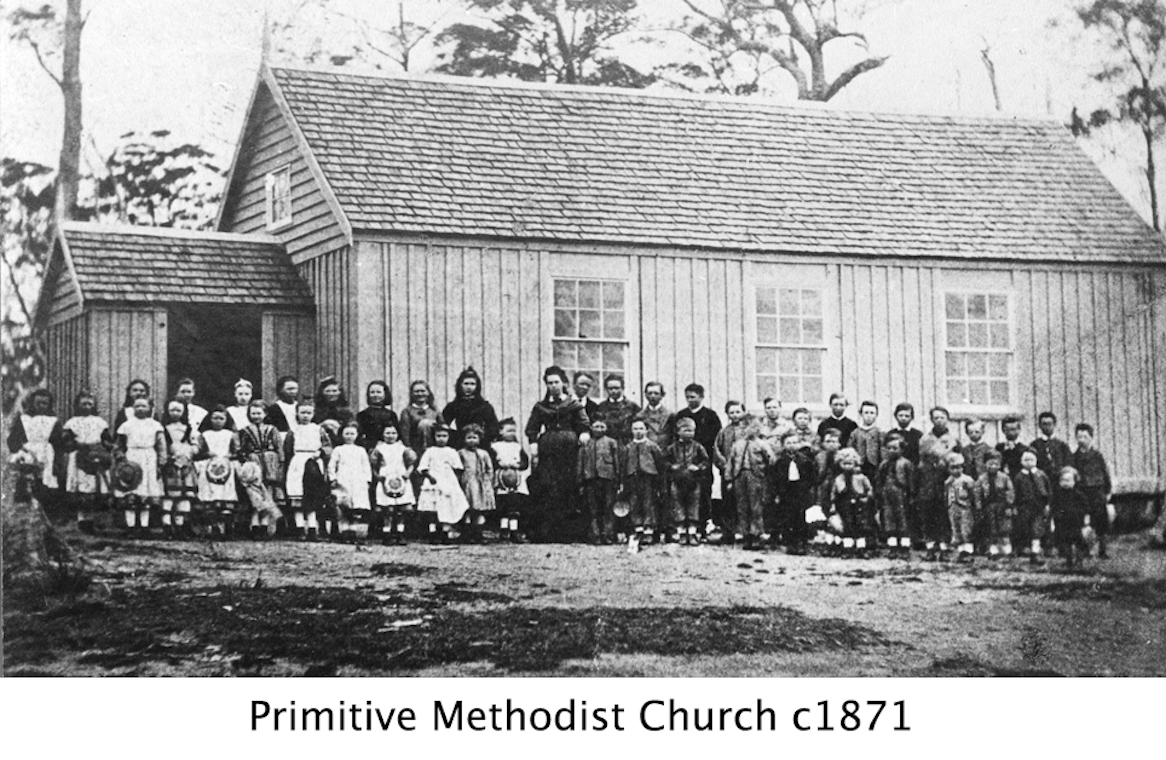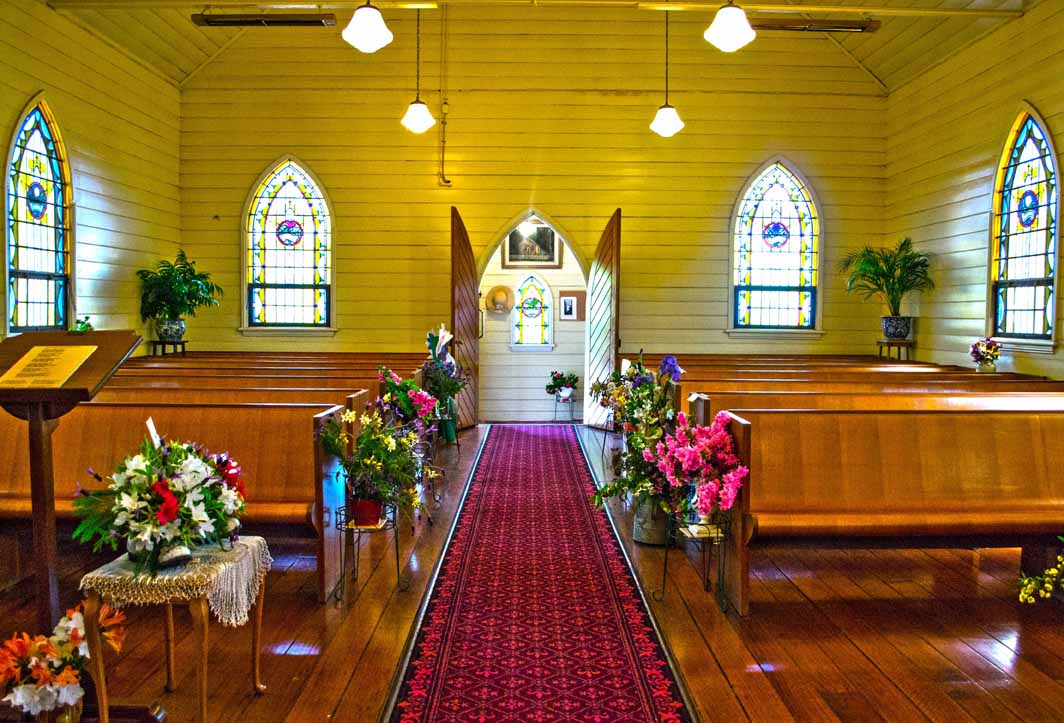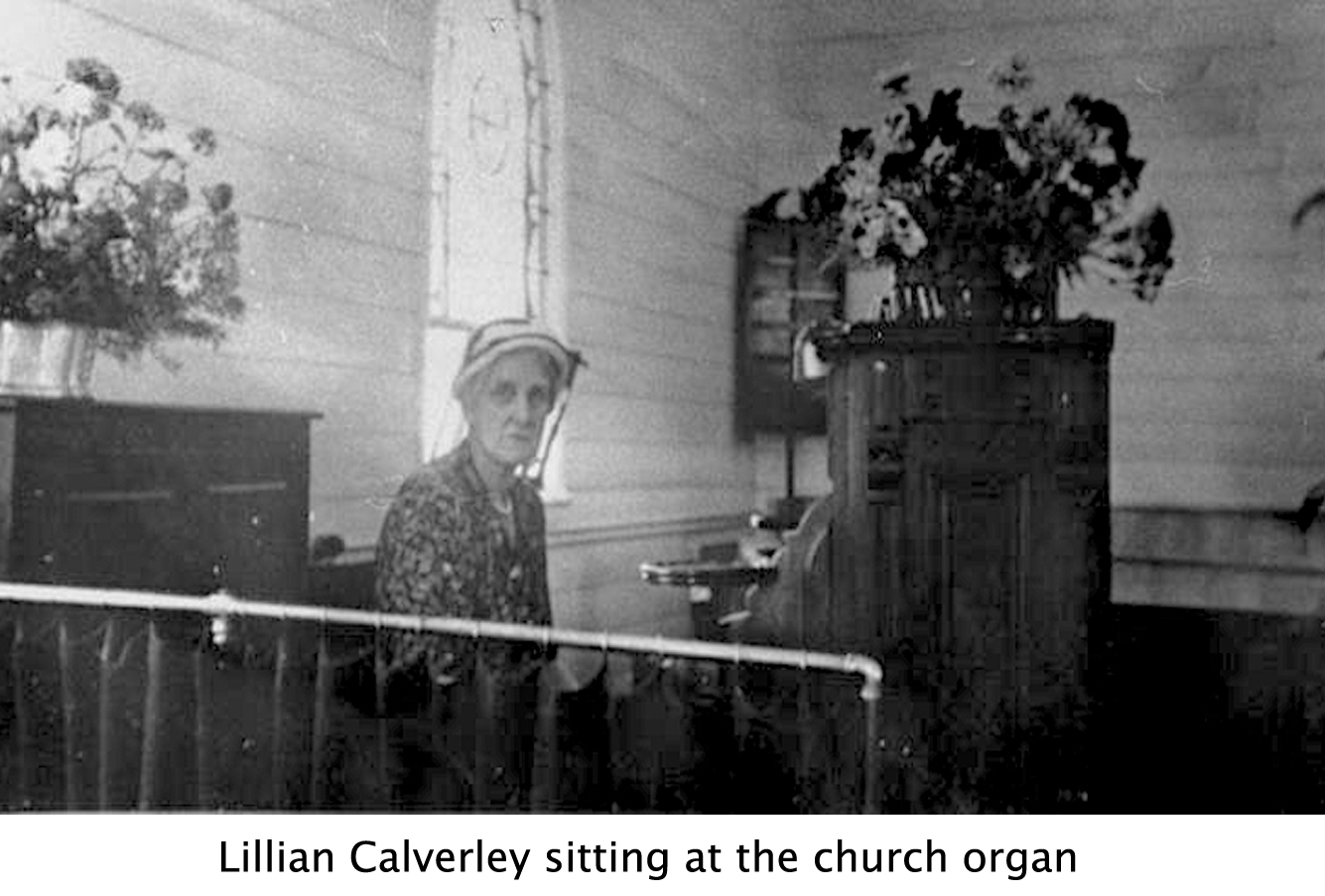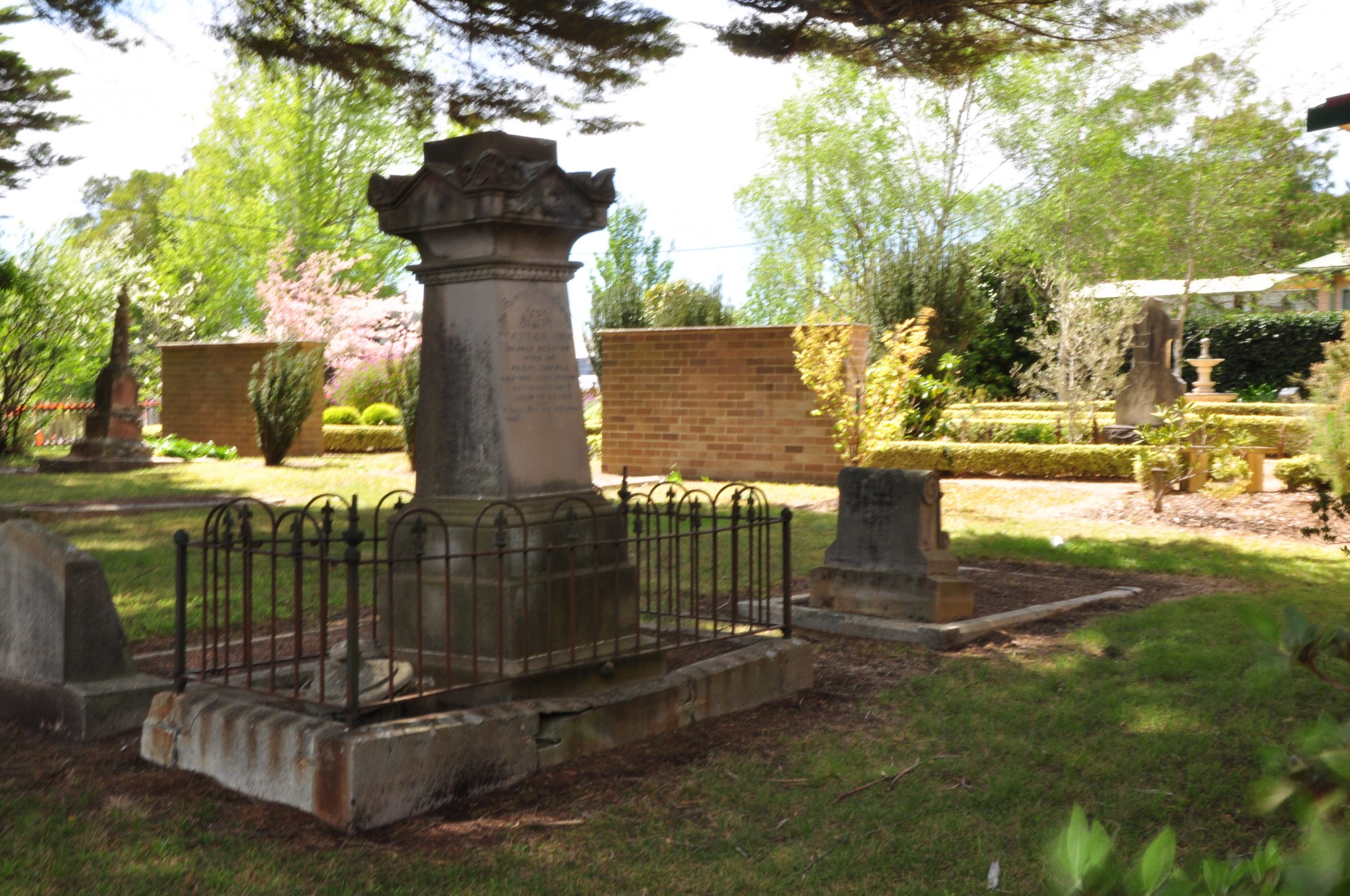The Bundanoon
free Audio Guide app
plus there is more history below if you wish:
Old Methodist Church
4 Church Street

Early beginnings
The earliest mentioned church services at Bundanoon were Primitive Methodist, held about 1869 at ‘Summer Hill’, the home of Walter Grice.
Primitive Methodism originated in England from about 1807 when a group of worshippers split from the Wesleyan Methodist Church. Their religious practices followed the earlier and more simple, or ‘primitive’, Methodist ideals and were more democratic.

The first Methodist Church in Bundanoon was built in the early 1870s on land at the corner of Railway Avenue and Church Street, the site of the present Soldier’s Memorial Hall. Constructed of timber slabs with a shingle roof, it was erected on one acre of land acquired by the Primitive Methodist congregation as a provisional grant, formalised in 1880. This building was also used for Bundanoon’s first school and served as the village’s first public meeting place. Lay preachers, including Walter Grice, Thomas Gambell, William James and Walter Layton, conducted the early services although ordained ministers from Bowral would occasionally speak. In 1884 there were 65 children on the Sunday school roll.
The current church
The present church was built by Mr Samuel Tooth Senior and opened free of debt in1885. It was ‘a neat weatherboard building with a handsome porch and elegant gothic windows. It is 45’ long by 22’ wide and is comfortably seated for about 250 persons’. The schoolroom at the rear was 25 feet square. The Reverend George James of Goulburn opened the church in April and preached the first sermon to a congregation of more than 200 people. The original slab church building was purchased by Walter Grice and removed to his home, Summer Hill, in Bundanoon, where it was used for guest accommodation.

In 1902 the Methodist Union was formed and the word Primitive was dropped. The first Presbyterian services were held in the Methodist Church from 1929 until 1960 when the Presbyterian Church was built in Phillip Street. In 1972 ownership of the Methodist Church land passed to the Methodist Church (NSW) Property Trust. With the formation of the Uniting Church of Australia, in 1977 Methodists, some Presbyterians and Congregationalists joined together as worship communities and the church became known as the Uniting Church. Together with churches at Robertson and Moss Vale, it formed the Uniting Church Parish of Moss Vale.
Electricity was connected to the Methodist Church in August 1931. In 1947 the church’s windows were replaced with leadlight windows, three on each side and two at the rear on either side of the portico, as well as a smaller leadlight window in the portico itself, at a cost of £235/16/6. Reverend L.A.R. Taylor dedicated these windows in April 1947.

In 1948 a low sandstone fence and Memorial gates were erected at the front of the church. Families and individuals within the congregation purchased blocks in the Memorial fence. Reverend Charles Wheeler performed the dedication of the gates and fence on 3 April 1948. With the assistance of the Ladies Church Aid Committee, new pews of Queensland maple laminated plywood and a new carpet were installed at this time.
Many weddings have been held at the church, the first being Mr and Mrs (Hugh) Farr on 29 August 1885.
Many members of the congregation gave long service to the church in various capacities. For example, the first organists, Hugh Farr, Nellie Ross, and Gladys Bowyer, were succeeded by Lillian Calverley.
Miss Calverley (1900-1988) was also choir mistress from about 1938 to 1968 and did the floral arrangements for over 60 years. She was the church’s longest serving organist, having played the organ in this church for 72 years. The organ had taken her attention when she was a young girl of 13 and was appointed Sunday School Organist. It would seem to be an Australian and possibly a world record for an organist to play for so many years in the one church. It is on record that Miss Calverley had worn out three organs and was well on the way to her fourth.

The church cemetery and gardens
The Primitive Methodist Church used the cemetery from 1872, with the earliest recorded burial being a child, John Dimmock, on 28 December of that year. At that time the earlier slab church was located at the corner of Railway Avenue and the existing church had not yet been built.
The graveyard is the final resting place for many people who faithfully served the church from its early inception in Bundanoon. Names engraved on headstones include other members of the Dimmock family, Freeman, Jeffery, Jennings, Lansdown, Layton, Phillips, Tyler and Terry.
[Note: John Chawkley Dimmock’s eldest son was the first child born in Jordan’s Crossing, now known as Bundanoon.]
Although the Bundanoon General Cemetery was operating from the early twentieth century, burials continued at the church’s cemetery until the local Council wrote to the church in 1940 to say it was considering recommending that the Department of Lands prohibit any future internments.
In 1995, the Uniting Church established the lovely Garden of Memories in the grounds of the church, a gift to the Bundanoon community. Two non-denominational columbarium walls offer a resting place for the ashes of loved ones. The columbarium is available to all members of the community.
As the Old Methodist Church did not have a foundation stone, the congregation installed one, with a plaque, in the adjacent Garden of Memories in 2010, to commemorate the church’s125th anniversary. The plaque also commemorates those in unmarked graves in the cemetery.


